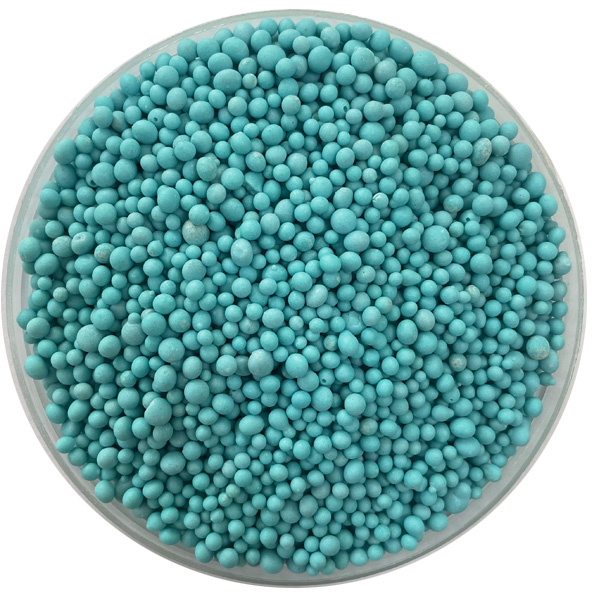
Nov . 10, 2024 05:56 Back to list
Understanding the Benefits of 16-20-0 Fertilizer for Optimal Plant Growth
Understanding 16-20-0 Fertilizer A Key Component in Nutrient Management
Fertilizers play a crucial role in modern agriculture, providing essential nutrients that help plants grow healthier and yield better crops. One commonly used fertilizer is the 16-20-0 formulation, which indicates the percentage of three key nutrients nitrogen (N), phosphorus (P), and potassium (K). In this case, the numbers represent 16% nitrogen, 20% phosphorus (as P2O5), and 0% potassium, implying that this fertilizer is especially rich in nitrogen and phosphorus but lacks potassium.
The Importance of Nitrogen
Nitrogen is a vital macronutrient for plants, essential for the synthesis of amino acids, proteins, and chlorophyll. It supports vigorous growth, leafy development, and overall plant health. When a fertilizer contains a high percentage of nitrogen, such as in the 16-20-0 formulation, it promotes lush foliage and increases the plant's ability to photosynthesize efficiently. This is particularly important for leafy vegetables, grasses, and certain flowering plants that require ample nitrogen to thrive.
Phosphorus Building Strong Roots
Phosphorus is another critical component of the 16-20-0 fertilizer. Represented as P2O5, phosphorus is important for the energy transfer processes within plants, including photosynthesis and respiration. It plays a significant role in root development, flower and seed production, and overall plant vigor. Enhanced phosphorus levels encourage strong root systems, which in turn improve nutrient uptake and water absorption. This makes 16-20-0 fertilizer particularly beneficial during the early stages of plant growth when establishing a robust root system is essential.
Lack of Potassium
16-20-0 fertilizer

While the 16-20-0 fertilizer comes with a rich supply of nitrogen and phosphorus, it notably lacks potassium
. Potassium is another critical nutrient that supports various plant functions, including water regulation, disease resistance, and fruit quality. Gardeners and farmers need to complement the use of 16-20-0 fertilizer with potassium sources if their soil tests show a deficiency in this nutrient. Potassium deficiencies can lead to weak plants, poor fruit development, and increased susceptibility to diseases.Application Timing and Method
The application timing and method for 16-20-0 fertilizer are crucial for maximizing its benefits. It is typically applied in the early spring, just before planting, as it helps prepare the soil to support young plants. Applying the fertilizer in a band or alongside the seed can ensure that young plants quickly access the nutrients they need. It is essential to follow the recommended application rates based on soil tests and specific crop requirements to prevent nutrient runoff and environmental impact.
Benefits and Best Practices
Using 16-20-0 fertilizer can lead to improved plant health, increased yields, and more robust growth, particularly for crops that favor high nitrogen and phosphorus applications. However, responsible use is necessary to minimize potential adverse effects on the environment. Avoiding over-application, employing soil testing, and considering the specific nutrient needs of the crops are essential practices. Additionally, integrating organic matter and other nutrient sources can create a more balanced nutrient profile for soils.
Conclusion
In summary, 16-20-0 fertilizer is a potent tool in agriculture, particularly effective for promoting leafy growth and strong root development due to its high nitrogen and phosphorus content. Understanding its components and how they affect plant health is crucial for farmers and gardeners alike. By applying this fertilizer with care and in conjunction with other nutrient sources, cultivators can enhance their crop productivity while maintaining sustainable agricultural practices.
-
Premium Amino Acid Fertilizer | Rapid Plant Growth Booster
NewsJul.31,2025
-
10 10 10 Fertilizer Organic—Balanced NPK for All Plants
NewsJul.30,2025
-
Premium 10 10 10 Fertilizer Organic for Balanced Plant Growth
NewsJul.29,2025
-
Premium 10 10 10 Fertilizer Organic for Balanced Plant Growth
NewsJul.29,2025
-
Premium 10 10 10 Fertilizer Organic for Balanced Plant Growth
NewsJul.29,2025
-
50 Pound Bags of 13-13-13 Fertilizer for All Plants – Bulk & Organic Options
NewsJul.28,2025
